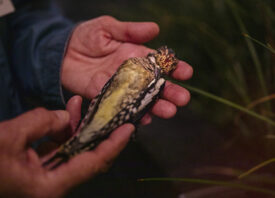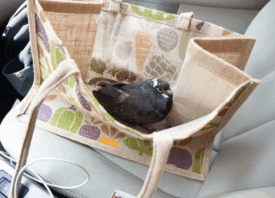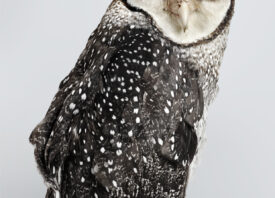Search this site
Wild Bird Fund in NYC Works Around the Clock to Rescue Animals


In 2016, Hedwig became the first injured snowy owl to arrive at Wild Bird Fund, New York City’s first rehabilitation and education center caring for animals in need. “She was shot near LaGuardia airport,” the photographer Mike Fernandez remembers. A bullet had likely wounded her pectoral muscle, and she was unable to fly.
For her portrait session with Fernandez, Hedwig stood in a small lightbox, and Rita McMahon, the founder of Wild Bird Fund, held a light just outside. “I was starstruck,” he tells me. “It felt like I was in the presence of a greater being.”
The photographer first heard about Wild Bird Fund and the vital work they do for the city’s wildlife about a decade ago. At the time, he had just started working for Audubon Magazine, and he soon found himself making regular visits to the Upper West Side clinic. He was moved by the passion and dedication of the staff and volunteers, and he was astonished to learn about the diversity of avian life residing in and passing through the city.
Wild Bird Fund treats an estimated 180 species, ranging from familiar favorites like pigeons and starlings to rarer visitors like snowy owls. Fall and spring are especially busy, as birds make their way across the East Coast migratory flyway, but they’re working around the clock all year round.
Human activity contributes to bird injuries, with window collisions and light pollution being widespread threads. “Birds get disoriented from all the lights and reflection from glass buildings,” Fernandez says. “They are looking for food and don’t know what windows or mirrors are, so they hit it head-on.”
That’s what happened to Super the Northern Flicker, who came into Wild Bird Fund with a fractured coracoid, and Eco the American Woodstock, who came in with a corneal ulcer. Both survived after receiving care at Wild Bird Fund.
It also makes sense that Hedwig, the snowy owl, was found near LaGuardia, as tarmacs can resemble familiar Arctic landscapes. Other causes of illness include lead poisoning, brought on by contaminated water or food; collisions with cars; encounters with household pets; pesticide use, and trash.
Sometimes, Wild Bird Fund also receives cases of abuse or neglect. During his time at the clinic, Fernandez met a cock rescued from a Brooklyn fighting ring. Very recently, Wild Bird Fund rescued a domestic king pigeon, who’d been released in Madison Square Park after being dyed pink. Despite the care he received, he died after about a week, likely from inhaling the toxins from the dye. Before he passed away, the team at Wild Bird Fund named him Flamingo. They name every single animal who comes to them for care.
As Rita McMahon once explained in an interview with National Geographic, the birds seem to know that the humans and Wild Bird Fund are trying to help them. To keep the birds comfortable, Fernandez limited every session to just one to two minutes.
When he photographed Hedwig the snowy owl, Fernandez knew that their paths would never meet again, but he remembers the time they spent together vividly. As part of the Audubon Mural Project, he painted a snowy owl in flight, dedicating the piece to Hedwig.
From Wild Bird Fund, Hedwig was transferred to Raptor Trust of New Jersey, where she continued her rehabilitation. She ultimately recovered—and was then released in the beautiful Shawangunk Mountains.
Wild Bird Fund relies on donations and volunteers to continue their life-saving work. Learn more about volunteer opportunities here, and make a donation here. Many of Fernandez’s portraits of patients at Wild Bird Fund are now on view at HERE Arts Center as part of I FOUND A BIRD, a two-person show with the painter and sculptor Katrina Slavik.



Corneal ulcer due to impact with window during migration. Fed and medicated six times a day released after 11 days.

Head trauma. Blood filled eye resulting in cataract and diminished sight in left eye. Applying for education license.



Hit a car while flying. Bruised shoulder and thigh. Released four days later in Central Park.
All images © Mike Fernandez
Looking for more animal rescue stories? Check out our conversations with Sophie Gamand, Sage Sohier, and Jo-Anne McArthur.



